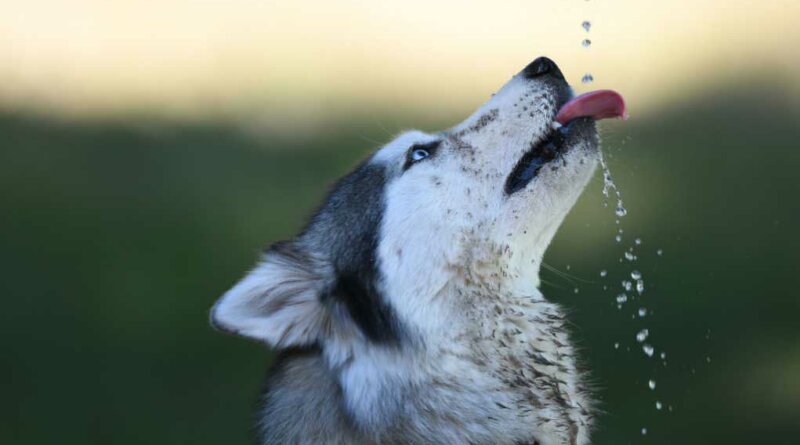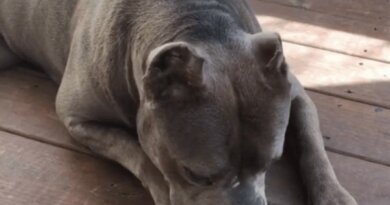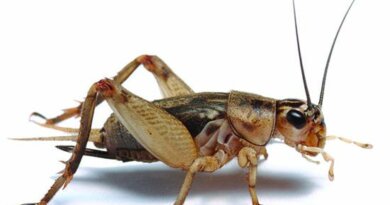Do Dogs with Cancer Drink More Water? – Top Dog Tips
“I think my dog has cancer. Now what?”
We understand you want to make sure you are doing what is best for your pooch. But cancer in dogs should not necessarily mean a death sentence.
Yes, it can be devastating.
And yes, it is a dreaded diagnosis leaving fur parents with no hope.
But know that cancer care keeps getting better over time. You can take comfort in knowing that medical advancements have given dogs a better chance at survival.
Medical practitioners can now treat the disease more successfully than in the past.
Cancer care centers offer cutting-edge treatment options and clinical knowledge to dog owners.
So, you see, there is a lot more we can do to help our pets live longer!
Understanding Cancer in Dogs
Dogs indeed develop cancer at a similar rate to that of humans. As a matter of fact, it is the leading cause of death in dogs.
As the major health problem in dogs, It is estimated that 1 in 4 dogs will eventually develop cancer.
Over the age of 10, about half of the dog population will be affected by the disease.
While millions of dogs get tumors every year, pets now have a higher success rate for treatment than in the past.
Medical study on canine cancer offers promise for preserving the lives of our furry friends.
But to provide the most appropriate treatment, an accurate diagnosis needs to be done first.
Dogs don’t get to tell what they feel and they depend on us to look after them. So as owners, we need to be vigilant for any signs and symptoms.
So, how do you identify cancer in dogs when it can arise in any cell of their body?
Signs and Symptoms of Cancer in Dogs
Canine cancer can take many different forms and appear anywhere making it challenging to determine. Even age and breed are irrelevant to it.
The signs are often the same as those in people, but the difference is our pets can’t tell us what is going on.
Tumors are arguably the most obvious indication that a dog has cancer. However, it’s important to note that not all lumps and bumps are malignant.
Some other symptoms associated with dog cancer include:
- Pain or Discomfort
- Lameness
- Change in behavior and habits
- Swollen lymph nodes
- Abnormal discharge
- Unusual odors
- Bloating
- Weight loss
- Lethargy
- Difficulty in eating
- Loss of appetite
- Trouble urinating
- Non-healing growths
- Difficulty in breathing
Pay attention if a dog who was once active starts to spend all of his time lounging around.
Also, have you noticed your dog drinking or relieving itself more than usual? This one you shouldn’t ignore.
Do Dogs with Cancer Drink More Water?
As a matter of fact, yes!
A sudden increase in thirst is one obvious change in your pup’s behavior.
Excessive thirst, also known as polydipsia, can be a concern for senior dogs, as it can be a sign of disease or a more critical health condition.
According to the Advanced Care Veterinary Hospital, as a general rule, dogs require an ounce of water per pound of body weight every day and will drink more water in warm weather and while exercising, much like humans do.
But if there is no evident cause for your pet’s increased thirst, then perhaps something is wrong.
It’s important to keep an eye on your dog’s water intake because too much water consumption could indicate an organ disorder, while too enough water consumption can result in dehydration.
Insatiable thirst can actually be related to tumors or hormone disorders. This act can be a sign of an adrenal gland or slow-growing hypothalamic tumor in the base of the brain.
Numerous conditions can lead to excessive thirst or dehydration in your dog, including cancer of the adrenal, pituitary, thyroid, liver, or kidneys.
But sometimes, it may not be the condition itself causing your dog’s excessive thirst but the medications taken.
That is why it’s crucial that you take your pooch to the vet so they can examine, diagnose the problem, and provide a course of action.
Should You Leave Water Out All Day?
Dogs’ access to water should never be restricted to reduce water consumption in dogs with polydipsia, regardless of the underlying source of the condition.
Dehydration or fluid imbalance may develop, which will worsen their symptoms.
In fact, underlying diseases that cause thirst are frequently treated in part by providing free access to plenty of water.
Veterinarians may also recommend electrolytes for pets who are dehydrated.
Further treatment can range from prescription medications to emergency hospitalization, depending on the veterinarian’s assessment of the illness creating the thirst.
If your dog is suffering from polydipsia, seek medical help as soon as possible, as the causes range from mild to life-threatening.
Diagnosis of Cancer in Dogs
Your dog will undergo a thorough physical examination from your veterinarian, who may also suggest several laboratory tests to rule out or confirm other systemic illnesses.
For a more thorough diagnosis and control of the illness, more testing could be required such as urinalysis, complete blood count, blood serum chemistry, and urine-specific gravity.
If your doctor suspects canine cancer as the reason for the excessive thirst, know that vets now can detect cancer sooner than ever.
Thanks to improved diagnostics, they can also choose the best course of action for each patient.
The diagnosis of dog cancer will be based upon fine needle aspiration, which draws a sample of cells from the tumor using a syringe and a thin, hollow needle.
In some cases, a biopsy may be imperative wherein the doctor takes a sample of tissue from the lump to make a certain diagnosis.
The majority of canine tumors are cancerous; thus, the doctor will need to use advanced imaging (ultrasounds, CT scans, or MRIs) to assess the severity of the condition.
Treatment for Cancer in Dogs
Your veterinary or veterinarian oncologist will decide the procedure of your pet’s cancer therapy.
The presence of metastases and the degree of disease invasion in the surrounding tissues will determine the best course of treatment.
The doctor may advise chemotherapy, radiation therapy, surgery, or a combination of these dog cancer treatments depending on the type of cancer.
In addition to the three most common cancer treatments for dogs, veterinary medicine has recently made advancements in other treatments, including antibody therapy, cryotherapy, bone marrow transplants, natural therapy, immunotherapy, palliative therapy, and vaccine therapy.
RELATED: Should I Treat My Dog for Cancer?
Is Cancer in Dogs Curable?
Surgery typically offers a cure.
But since the disease eventually comes back, a permanent cure is not possible for all types of dog cancer.
While research toward a cure is still ongoing, the best course of action is the removal or reduction of cancer cells in the body.
Canine cancer cannot be prevented using any known methods. Treatments concentrate on both tumor management and mitigating the risk of metastasis.
The goal here is to control the disease and maintain the best quality of life for as long as possible.
Do Dogs with Cancer Drink More Water: FAQs
Do dogs drink more if they have cancer?
Increased drinking or frequent urination may be an indication of various metabolic disorders or certain types of canine cancer.
What does it mean when an older dog starts drinking a lot of water?
Increased water consumption may indicate several various health issues. The most frequent causes in older dogs are Cushing’s disease, diabetes mellitus, and kidney failure.
Dehydration can also be accompanied by increased water consumption; however, this condition can affect dogs of any age.
Do dogs with cancer want to eat?
Chemotherapy has an impact on cells that divide quickly.
The cells that border the stomach and intestines are also quickly dividing and can be harmed. However, cancer cells are the main target.
Nausea, vomiting, and diarrhea are frequent side effects, which usually reduce a dog’s appetite and food intake.
Do Dogs with Cancer Drink More Water: Final Thoughts
There is no higher priority than making sure your dog is healthy. And on matters of health, your doctor will be your greatest resource to help you out.
A veterinary examination is your best defense against cancer in dogs since veterinarians are trained to spot any anomalies in your pet.
Visits for routine wellness exams can help detect signs while the disease is still in the early stages.
However, the majority of pets only see their vet once or twice a year. Therefore, it is beneficial if you actively participate in keeping track of your pet’s health.
As a fur parent, you interact with your fur baby daily, which means you can keep a lookout for any potential cancer symptoms.
When you do inspections, avoid panicking or jumping to conclusions before visiting your veterinarian.
The thing about cancer symptoms is that they might also be indicators of other health issues.
For instance, a urinary tract infection may be the cause of straining to urinate.
Chronic thirst may be caused by kidney or diabetic issues. Vomiting and diarrhea can be symptoms of a wide range of illnesses.
Vets wouldn’t want people to be on the edge of their seats about cancer, but they also don’t want to let something go unnoticed or progress too far before action is taken either.
Whatever the circumstance, speaking with experts will empower you to make decisions regarding your pet’s quality of life that are confident and well-informed.
READ NEXT: How Expensive is Dog Cancer Treatment?
Related








